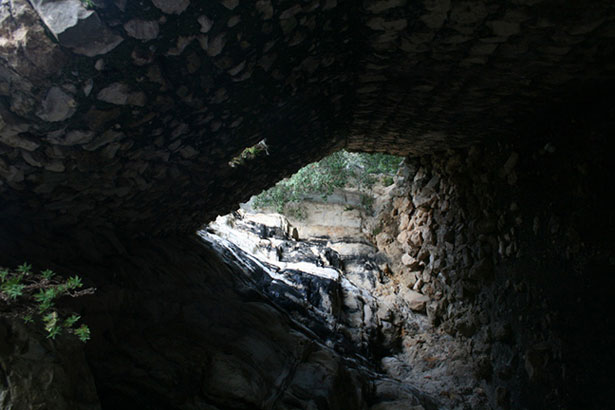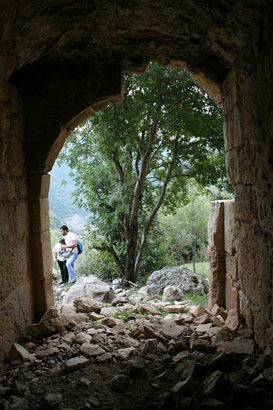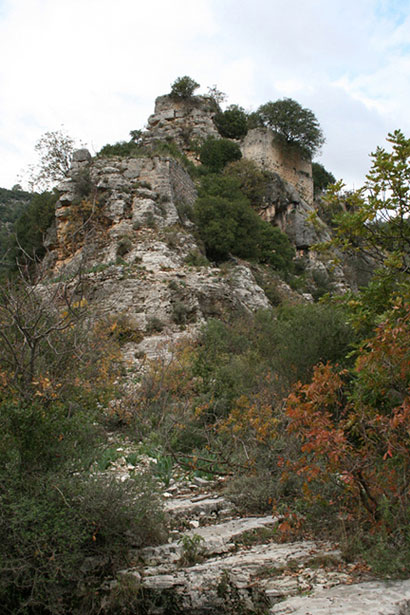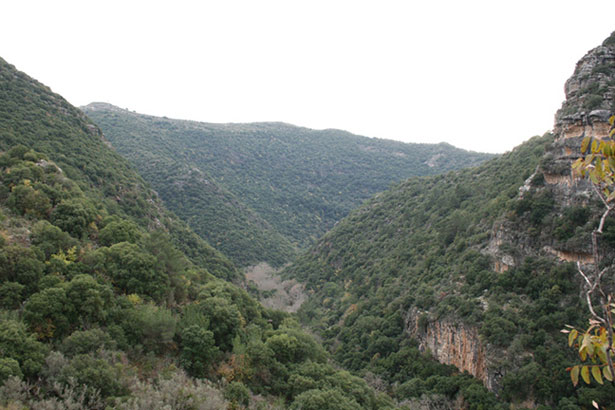The Qalaat Abou el Hassan fortress, also known as Belhasem, is one of Lebanon’s ancient hidden secrets.

 Prehistoric castles, ancient ruins, nameless temples and pillars mark almost every area of Lebanon. Countless excavations and archeological digs have taken place all over the country, and yet we are nowhere near finishing our mission: to uncover the ancient secrets of the different civilizations that have thrived and fallen, one after the other, throughout the history of Lebanon.
Prehistoric castles, ancient ruins, nameless temples and pillars mark almost every area of Lebanon. Countless excavations and archeological digs have taken place all over the country, and yet we are nowhere near finishing our mission: to uncover the ancient secrets of the different civilizations that have thrived and fallen, one after the other, throughout the history of Lebanon.
On a sunny bright weekend, I decided to pay a visit to some friends in Jezzine, a charming southern town nicknamed the “City of Falls” because of its numerous waterfalls. Jezzine is also known for its historic landmarks, such as the cave used as a hiding place by Prince Fakhreddine II during the Ottoman reign.

Lebanon’s rich history revealed itself one more time in the discovery of the ruins of an ancient gem in this region. During a boat ride along the Aloali River in Sfaray, a well-known area in the Jezzine region, my friends and I saw a high cliff surrounded by woods and bushes.
When we drew closer a group of people gathered below the cliff informed us that an ancient fortress lies on the top. Naturally curious, we asked to see the fortress ourselves, but were told that since it is located on private land access is not allowed without special permission.

The crusaders built the fortress in the early 12th century, when it was known as Qaalat Abou el Hassan or Belhasem. In 1128, it was occupied by a wealthy crusader and was first mentioned in the chronicles as the Patriarch of Jerusalem.
Strategically, it served to defend the ancient city of Sidon, a prosperous city and a center of trade and commerce, which consequently was subject of many attacks and invasions.
Since the attacks mostly came from mountains surrounding the city, a series of fortresses were built around the city to protect it. Some walls of Belhasem are still standing but the fortresses has really surrendered over time to invasion by vegetation.

Another one is thought to exist in the village of Abra. Together with the caves of Tyron that were built in the Shouf district, these fortresses secured the surrounding area of Sidon.
The fortress is divided into two areas, each protected by curtainwalls and rectangular towers. Located on an isolated cliff over the Aouali River, it is reachable by foot from the village of Sfaray via an asphalted road and venturing through the wilderness of the valley.
Several scientists and archeological excavations have taken notice of this fortress. In the 1900s, Camille Enlart, a prominent French archeologist and art historian, spoke about the fortress. It is also mentioned the Guide Bleu, the famous French travel guide. In 2005, a Polish group came to study Belhasem, as part of a university excavation mission. They found a silex (very hard stone, like flint), suggesting that the area, if not necessary the fortress, was a prehistoric one. An engraving was also discovered, depicting a scene with the fortress as seen from the Shouf area. In the old times, engravings, which were carved on flat stones, were the closest resemblance of a photograph.
Every area, town or village is filled with historical wonders waiting to be discovered and Belhasem is certainly no exception.
HOW TO GET THERE
Drive southbound from Beirut to Sidon. From there, head straight east towards Jezzine. You will pass through towns such as Kfarjarra, Aabra, Kfarfalous and Roum before you reach the town of Jezzine.
Here are 8 things to do in Jezzine.
Article edited on October 31, 2021
Loading

